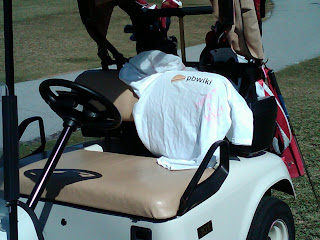
Over Spring Break 2010, I traveled with Derek and his family to Atlantis on Paradise Island in the Bahamas. This trip was fun and exciting, although it was very expensive ($12 dollars for just a hamburger!). However, we had a fabulous time and saw science in the strangest places. Just to start off, the ocean tides are an example of gravity. Just like all matter, the moon has gravity. It pulls on the water and the water hits the shore and then it lessens its pull and the water returns to sea. As the moon revolves around the Earth, the water changes directions to follow it, resulting in high tides and low tides.
A major part of Atlantis is its water park. This water park is filled with famous rides, including the slide pictured here that goes through a shark tank. This slide, being very steep, is angles at about 60 degrees so that the rider does not fall off the slide

but yet ge
ts the thrill of feeling like he/she is
going straight down.
Pictured below is the path to the casino. I am not a fan of gambling, however, the statistics involved in gambling are truly astonishing. In the game with the red and black circle, a gambler bets that a marble with land in a red or black space on the checkered circle (a 50/50 shot). However, there are two green spaces--just enough to throw off the 50/50 odds. Now, the dealer will always win at the end of the night because they tip the odds and have a greater chance of landing on their spaces (now the odds are more like 56/44).
The green eel pictured here is one of life's greatest mystery creatures. Like a slithering snake, this eel glides through the ocean underneath rocks, devouring

prey. Over time, this eel acquired traits necessary for survival. Such traits include its sharp teeth and natural means
of defense: electricity. If you touched

one of the eels and it felt that it was in danger, the eel would release up to hundre
ds of volts of electricity. Eels use this defense in the open ocean as well against predators such as sharks and squids.
The second fish shown is called a deep sea tuna (although they are not tuna fish at all!). Derek and I watched this fish for about thirty minutes...and it did absolutely nothing. Known as the "lazy" fish, the deep sea tuna rests in a single spot for days with an open mouth waiting for small bacteria to enter. It can move quickly if extremely hunger, however, it prefers to stay still. To maintain the largest tank, filled with over 50 different species of fish, Atlantis imports specific foods from around the world so as the fish remain peaceful and well fed. Also, you might be able to see some ruins in the background of the tank. This is because Atlantis tried to design its aquarium after the imaginary underwater city of Atlantis and so they put ruins in to represent underwater buildings.
Back outside the hotel, there is a dock with several yachts, each of which probably cost over a few million dollars. Derek and I are seen standing in front of one of these immense ships. In the other pictures, we are seen in front of the main hotel building of Atlantis.
When you get the chance, you should come down to Atlantis--as











